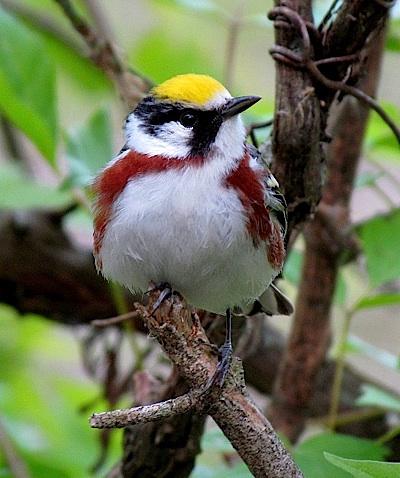Editor's note: National parks are some of the best places in the world to look for birds. Kirby Adams, who has been known to drive across several states just to catch sight of an unusual species, opens the door to this activity in the parks.
Birders are a strange bunch of critters. I can say that because I’m one of them. We tend to carry around enough optical equipment to make the guys that were hunting Osama bin Laden jealous. We think eating breakfast at 3 a.m. in the summer is perfectly normal. We tend to travel…a lot.
That last habit is surely shared with virtually all of the Traveler’s readers, but birders still go to extremes. Mention 'Magee Marsh' to most seasoned birders in North America and you’ll get a knowing nod of recognition despite Magee Marsh being an obscure few acres of wetland east of Toledo that isn’t even on most maps. Every May thousands of birders, including many from Europe, walk the boardwalk at Magee to watch wood warblers make their preparation to migrate across Lake Erie.
Ever heard of Grayling, Michigan? If you’re a birder, you likely have, because that’s where you go to see the endangered Kirtland’s warbler. This little bird winters in the Bahamas and nests in the jack pine forests of only a few counties in rural northeast Michigan. I’m lucky enough to live within two hours of both of those birding holy grounds, but I still get around.
Among the best birding locations are many of the National Wildlife Refuges, domain of the U.S. Fish and Wildlife Service. After all, the emblem of the NWR System is a goose and a vast majority of the refuges are there primarily for the benefit of migratory waterfowl or other birds. But the National Park Service isn’t left out of the fun. A majority of the units managed by the Park Service protect natural areas for the enjoyment of all.
Odd as we may be, birders are covered by that “all” and we’ll be the first to tell you that birding is a hobby that can be enjoyed absolutely anywhere. Take a birder to Fort Necessity National Battlefield and she’ll bring along her binoculars. (My wife and I spotted a nifty pair of red-tailed hawks there last Sunday.) Thaddeus Kosciuszko National Memorial may essentially be little more than a house in Philadelphia, but my birding instinct tells me there are pigeons there.
The gems of the park system for those who obsess about birds are also those that are familiar to everyone: Acadia with its vertical cliffs adorned with peregrine falcon nests, Big Bend with 450 species of birds, and Everglades where a host of wading birds pose and delight onlookers like nowhere else on the continent. Yellowstone and Olympic both rank near the top in numbers of nesting species of raptors and water birds.
Somewhat less obvious, but still popular, are units like Sleeping Bear Dunes National Lakeshore which takes the prize for most total nesting species at 160. Like warblers? You’ll find 22 species nesting in the most-visited park, Great Smoky Mountains. (The Smokies narrowly misses the warbler crown, though, which is a dead-heat between two national lakeshores: Apostle Islands and Pictured Rocks with 23 species each.)
It’s pretty obvious that birds love national parks, and that’s why bird-watchers love those same parks. In the weeks and months to come I hope to take you on a virtual tour of the best parks for birding. Along the way we’ll spot some birds of incredibly colorful plumage, as well as some bird-watchers of equally colorful personality.
Grab your spotting scope and America the Beautiful Pass…we’re going birding!






Comments
Thanks for the great introduction to birding in the national parks, Kirby! I'm looking forward to more of your articles.